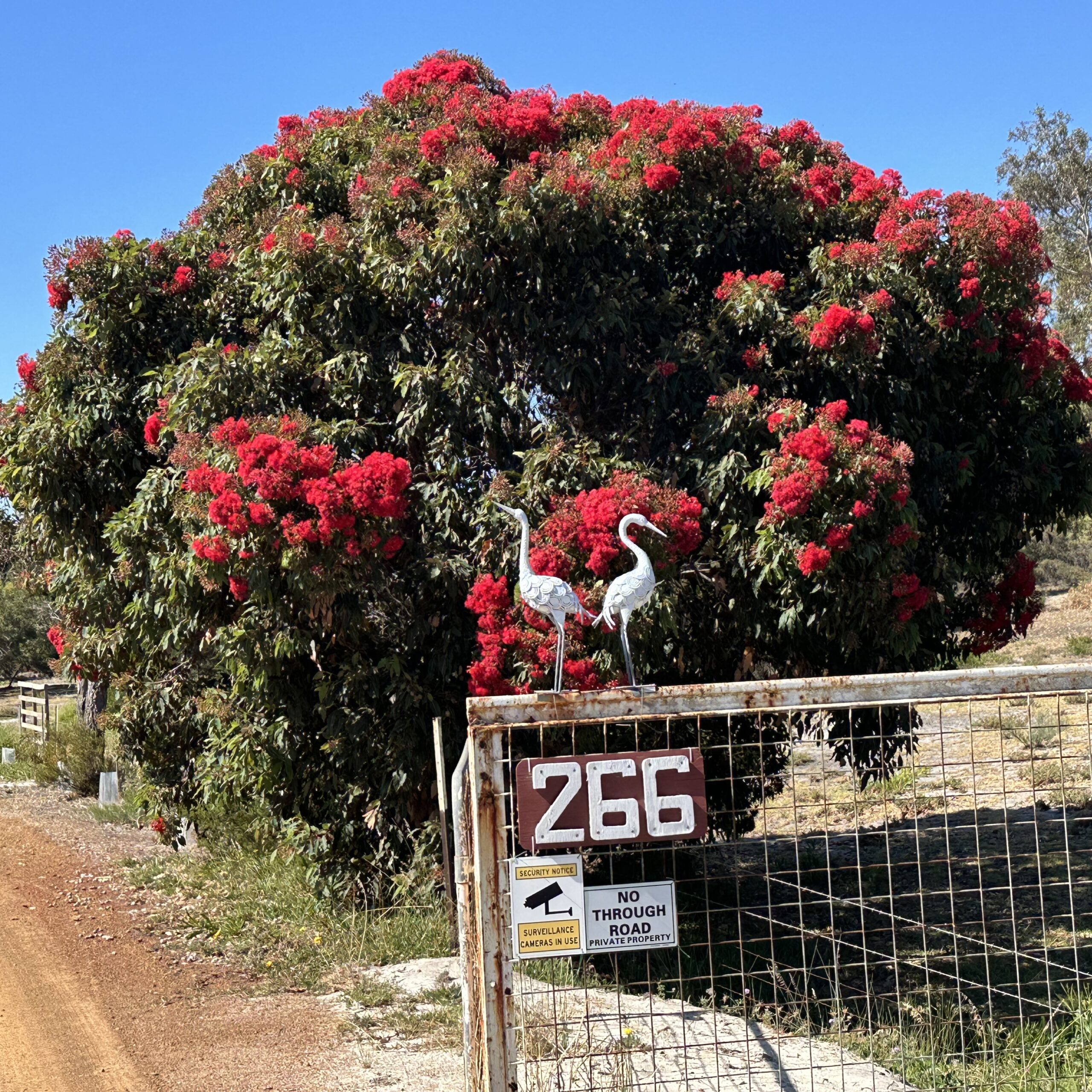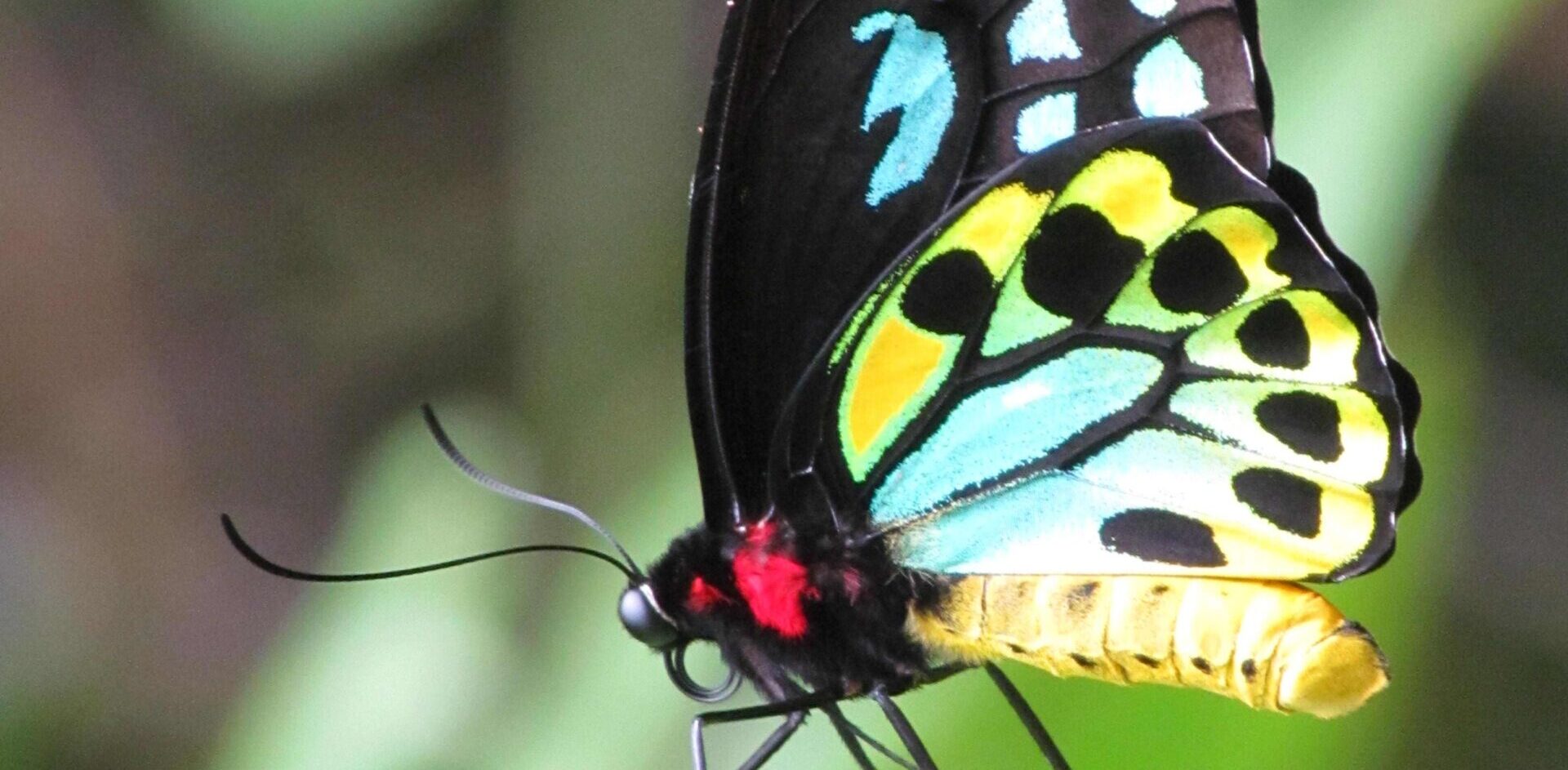Left: Carnaby’s black cockatoo (Zanda latirostris), Right: Red flowering gum (Corymbia ficifolia), an endemic species to southwest WA.Photo credits: Lori-Ann Shibish and Colin Ingram Esperance Wildlife Sanctuary Inc Western Australia • CHADWICK In 2021 we purchased our 12-acre property that was part of a 1980s subdivision, partly cleared to run...
Giraffes, elephants, rhinos, lions, reptiles, frogs, sharks need governments to vote for their protection.
For two weeks in August, world governments will come together in Geneva for the Conference of the Parties to the United Nations Convention on International Trade in Endangered Species (CITES CoP18) to decide how to regulate international trade in tens of thousands of wild species. When casting their votes to either protect or commercially trade wildlife and their body parts, Humane Society International is asking governments to heed the wildlife extinction crisis that, according to a UN report, is seeing wild species of flora and fauna decline at rates never before seen in human history. The report, published in May, warns that species extinction is accelerating at an unprecedented rate, and identifies direct exploitation of wildlife as a top threat, and calls on policy-makers to consider the global public good of policies that restrict exploitation, rather than succumbing to pressure by those with vested interests in commercial exploitation of wildlife.
Speaking up for the interests of wildlife, Humane Society International will have a delegation of wildlife experts attending the CITES meeting and I will be proud to join them. We will be urging nations to take action in recognition of this new era of wildlife extinction. My job will be to liaise with the Australia Government to ensure its vote is counted amongst those prioritizing wildlife protection.
Speaking ahead of the meeting Humane Society International President, Jeffrey Flocken says: “With UN experts warning that one million of the world’s estimated 8 million species are threatened with extinction, the time for timid policy making is over. We need action from the community of nations before it’s too late. No one needs elephant ivory trinkets, shark fin soup, African lion hunting trophies, or giraffe skin pillows. What we all need is the survival of these species for the health of the planet. Through multilateral treaties like CITES and through national legislation and enforcement policies, we must collaborate to put a halt to the ruthless exploitation that is pushing our precious wildlife to the brink across the globe.”
The landmark UN report from the Intergovernmental Science-Policy Platform on Biodiversity and Ecosystem Services assesses changes over the past five decades. It concluded that more than 40 percent of amphibian species, and more than a third of all marine mammals are threatened. At least 680 vertebrate species have been driven to extinction since the 16th century.
In total, 251 animal species are being considered for CITES up-listing or down-listing, including the giraffe, African elephant, southern white rhino, mako shark, guitarfish, Indian star tortoise and glass frogs. CITES offers different levels of protection for species affected by international trade:
- Appendix I is for species threatened with extinction which are/may be affected by trade; it bans trade in these species for primarily commercial purposes and imposes strict regulation.
- Appendix II is for species which although not necessarily now threatened with extinction, may become so. Trade in these species is allowed but strictly regulated.
Key species listing and other proposals to be discussed include:
Gaining first-time protection for giraffes (listing proposal): The Central African Republic, Chad, Kenya, Mali, Niger and Senegal, supported by the 32 members of the African Elephant Coalition, are requesting for the giraffe to be listed on Appendix II. The giraffe is currently not listed on CITES despite its wild population having declined between 36 and 40 percent over the last 30 years. The species is threatened by habitat loss and poaching, and is internationally traded; nearly 40,000 giraffe parts and products were imported to the U.S. alone from 2006-2015, including 21,402 bone carvings, 3,744 trophies, 3,008 skin pieces and 825 jewellery pieces. Giraffe parts are also traded in EU member states such as the United Kingdom and Germany.
Protecting African elephants facing increasing threats (listing proposals): Ten African countries including Burkina Faso, Côte d’Ivoire, Gabon and Kenya want to restore African elephant populations to the highest level of CITES protection, transferring elephant populations of Botswana, Namibia, South Africa and Zimbabwe back to Appendix I from Appendix II; all other African elephant populations are already on Appendix I.
In a separate proposal, Israel wants to see the long-extinct woolly mammoth listed in Appendix II to tackle the growing trade in mammoth ivory which can be used to launder illegal elephant ivory.
By contrast, Botswana, Namibia and Zimbabwe have proposed to allow international trade in registered government-owned stocks of African elephant ivory. Meanwhile, Zambia seeks to reduce protection for its elephant population from Appendix I to II and to allow international trade in raw ivory for commercial purposes.
Stopping the decline of mako sharks, giant guitarfishes and wedgefishes (listing proposals): Fifty-six countries plus the European Union propose that endangered longfin and shortfin mako sharks be listed on CITES Appendix II. Some 1,500 tonnes of this shark were caught in the north Atlantic alone between January and June 2018. Dozens of countries have proposed that six species of giant guitarfishes and 10 species of wedgefishes be listed on Appendix II. All of these fish species are declining in the wild, mainly as a result of over-fishing, particularly for the lucrative Asian shark fin market. Guitarfish populations have declined 80 percent over the past three generations. All species in the guitarfish and wedgefish families were recently re-classified on the IUCN Red List as Critically Endangered.
Defending the Southern white rhino against exploitative proposals (listing proposals): Namibia, which has a very poor conviction rate for poaching, proposes reducing CITES protection for its population of Southern white rhino. Eswatini (formerly Swaziland) seeks an amendment that would, in effect, open international commercial trade in horn of its 66 Southern white rhinos, risking encouraging horn consumption generally. HSI opposes both proposals. The Southern White Rhino is Near Threatened (IUCN) with an estimated 20,000 animals in Africa, of which only 1,037 are left in Namibia and 66 in Eswatini. They are threatened by poaching for their horn, which is valued in Asia (China and Viet Nam); 7,900 animals have been poached since 2008. Poaching in South Africa, which is home to around 90 percent of southern white rhino, has escalated enormously in recent years. Eswatini seeks an amendment to its listing to, in effect, open international trade for commercial purposes in horn of its 66 Southern white rhinos, risking also encouraging horn consumption generally. Namibia, which has a very poor conviction rate for poaching, proposes to reduce CITES protection for its population of Southern white rhino.
Challenging the sale of Sei whale meat (working document): Although the sei whale is listed on CITES Appendix I, Japan has killed more than 1,500 in the past 16 years, and sold the meat in Japan, a violation of CITES. Following the CITES Standing Committee’s determination that Japan was not complying with CITES because of use of sei whale meat for primarily commercial purposes, HSI wants Japan’s compliance plan to include a strategy for the destruction of all illegally sourced sei whale meat that is currently stockpiled in the country, rather than allowing Japan to sell it. And it is on this issue where we look forward to particularly strong leadership from the Australian Government.
Increasing protections for amphibians and reptiles (listing proposals: lizards, snakes, turtles, tortoises, frogs and newts): Sri Lanka wants to protect 10 endemic lizard species by moving them from unlisted to CITES Appendix I listing. Lizards such as the Black-cheek lizard, are illegally wild-caught and exported for the pet trade, with high mortality rates in transit. They are regularly on sale in Europe and the USA, selling for up to US$1,000US per pair.
There are also proposals to similarly protect 22 gecko species and 18 iguana species including the spinytail iguanas from Mexico and Central America.
Iran is seeking to list the spider-tailed horned viper on Appendix II. The species has a unique tail structure that looks like a spider that it uses to attract predators to their death, for food.
Viet Nam is seeking greater protection for turtles, such as the Bourret’s box turtle, killed for human food and for the pet trade, and there is a proposal by Bangladesh, India, Senegal and Sri Lanka to increase protection for the Indian star tortoise and the pancake tortoise from Appendix II to I. The star tortoise is illegally wild-caught for the pet trade.
Costa Rica, El Salvador, Honduras and Peru propose to give 104 currently unlisted species of glass frogs, threatened by collection for the pet trade, CITES protection. Glass frogs are regularly advertised for sale on the internet, with the USA importing 2,138 from 2004-2016. In Europe they sell for €175-900 each.
China, Viet Nam and the European Union seek to protect 40 currently unlisted newt species, such as the crocodile newt and Asian warty newt, threatened by collection for the food and pet trades, on CITES Appendix II.
Opposing the commercial captive breeding of African lions (working document): An estimated 12,000 lions are held in captivity on some 300 “farms” in South Africa, where they are bred to supply the trade in hunting trophies and bones, as well as to supply animals for cub-petting and lion-walk tourist attractions. HSI supports efforts at CITES to restrict captive breeding of lions to solely those beneficial to lion conservation efforts, and to eliminate the use of lion (and tiger and leopard) bone in traditional medicines and products.
Jaguar trafficking: Addressing the emerging demand for jaguar parts (working document): Costa Rica, Mexico and Peru would like the CITES Secretariat to conduct a study of illegal trade in jaguars (listed on CITES Appendix I) and have tabled documents to support this. There is evidence of an alarming increase in jaguar poaching in Latin America to supply Asian markets with their parts including paws, teeth and bones. Currently the evidence of illegal trade has been largely anecdotal, so the results of a study could be used to strengthen legislation, enforcement and education to curb any growing trends in jaguar poaching and trafficking.
Humane Society International thanks all of our supporters for the means to get to this important meeting. We will do our utmost to ensure all the wildlife up for debate get the protection and fighting chance they need.
Nicola Beynon is our Head of Campaigns in Australia and has twenty five years of experience campaigning in the Australian and international animal protection movements. She first joined HSI in 1998 and has spent a total of 15 years with the organisation. She has also spent time working in the NSW parliament as a policy advisor to an upper house MP and spent three years with World Animal Protection. Nicola has championed wildlife protection at many multi-lateral environment meetings including the UN Convention for Trade in Endangered Species CITES, Convention for the Conservation of Biological Diversity (CBD), Convention for Migratory Species and the International Whaling Commission (IWC); often as an adviser on Australian government delegations. Career highlights have been negotiating Australia’s national environment laws in 1999, securing protection for a ‘million acres’ of threatened wildlife habitat, taking the Japanese whalers to court and winning, working with the Australian Government to instigate international agreements for albatross and sharks, and protecting great white sharks from the global trade in their jaws and fins.
Image credit: pen_ash from Pixabay


